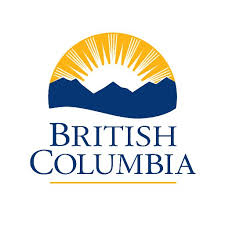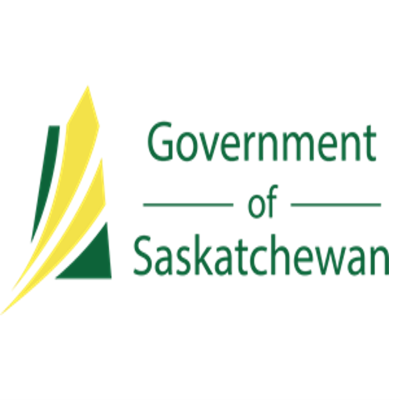géologie
Type of resources
Available actions
Topics
Keywords
Contact for the resource
Provided by
Formats
Representation types
Update frequencies
status
Scale
-

An interpretation of bedrock geology, topography and other sources of information that shows the potential for karst formations. This is a reconnaissance level map for all of British Columbia
-

A polygon coverage showing the location of coalfields with coalbed methane (cbm) potential in BC
-

This layer contains polygon features that represent geological units in New Brunswick. The associated Bedrock Geology Relate Table contains details about each map unit, including: a brief legend description, Group name, Formation name, and rock age. This layer is the result of nearly 50 years of bedrock mapping and it continues to change as new interpretations are made and more data is collected through field work and analysis.
-

This layer contains polygon features that represent the generalized surficial geology of New Brunswick. Unconsolidated materials occurring over bedrock, are classified according to physical attributes and genesis, and categorized into map units. This layer is intended to be used at small scales (e.g., provincial scale). It is an update of the 2002 Generalized Surficial Geology Map of New Brunswick, the updates reflect re-interpretation of the geology based on additional field investigations.
-

This map service provides access to the Chronology dataset shown on the GeoAtlas application. **Please Note – All published Saskatchewan Geological Survey datasets, including those available through the Saskatchewan Mining and Petroleum GeoAtlas, are sourced from the Enterprise GIS Data Warehouse. They are therefore identical and share the same refresh schedule. This dataset represents the chronology for the Province of Saskatchewan at 1:1 million scale. It is a regional distribution of bedrock categorized by age into Archean, Archean or Proterozoic, Proterozoic, Helikian, Ordovician, Silurian, Devonian, Cretaceous, and Tertiary for the province of Saskatchewan, Canada. Mapping in support of this dataset was over many years of compiling bedrock data and integrating into this product. The data was created as a file geodatabase feature class and output for public distribution.
-

This data set represents the digital Mineral Resource potential of the Province of Saskatchewan. This dataset represents the mineral resource potential of Saskatchewan. Methodologies used to determine a ranking system of low to high mineral potential areas. 6 being high mineral potential while 1 being low. The data was created as a file geodatabase feature class and output for public distribution. **Please Note – All published Saskatchewan Geological Survey datasets, including those available through the Saskatchewan Mining and Petroleum GeoAtlas, are sourced from the Enterprise GIS Data Warehouse. They are therefore identical and share the same refresh schedule.
-

This layer is part of the Geological Survey of Canada's earthquake monitoring network. There are some blank fields toward the beginning of the listing, from the time the network was being installed and hence parameters were often unknown. Also, all depths in the table are "fixed" to a depth which is an integer multiple of 5km, according to lowest obtainable residuals and known crustal structure. The number and magnitude of located events are also dependent on the time recorded, as the magnitude threshold lowered as more stations were installed. The larger, potentially damaging earthquakes, however, were likely recorded from the inception of the network as these events produce waves which reach the entire western network. Distributed from [GeoYukon](https://yukon.ca/geoyukon) by the [Government of Yukon](https://yukon.ca/maps) . Discover more digital map data and interactive maps from Yukon's digital map data collection. For more information: [geomatics.help@yukon.ca](mailto:geomatics.help@yukon.ca)
-

Grouping can include up to a maximum of 750 placer claims. All placer claims must be contiguous, i.e. they must be adjoining. Any solitary placer claims that do not share at least one boundary with the placer claims to be grouped cannot be included in the grouping. Distributed from [GeoYukon](https://yukon.ca/geoyukon) by the [Government of Yukon](https://yukon.ca/maps) . Discover more digital map data and interactive maps from Yukon's digital map data collection. For more information: [geomatics.help@yukon.ca](mailto:geomatics.help@yukon.ca)
-

This map service provides access to the Cratonic Elements dataset shown on the GeoAtlas application. **Please Note – All published Saskatchewan Geological Survey datasets, including those available through the Saskatchewan Mining and Petroleum GeoAtlas, are sourced from the Enterprise GIS Data Warehouse. They are therefore identical and share the same refresh schedule. This dataset shows the Cratonic Elements of the province of Saskatchewan at 1:1 million scale. This data was compiled using years of bedrock mapping, compiled into a file geodatabase feature class and output for public distribution.
-

A Yukon-wide compilation of map footprints and associated citation data for 191 published bedrock geology maps that were incorporated into the Yukon bedrock geology compilation. The maps were originally produced by the GSC, YGS, Yukon Government and various universities at various scales ranging from 1:10,000 to 1:500,000. Attribute data for each map footprint includes: year, scale, author, publisher, map number, NTS sheet and title. Distributed from [GeoYukon](https://yukon.ca/en/geoyukon) by the [Government of Yukon](https://yukon.ca/maps) . Discover more digital map data and interactive maps from Yukon's digital map data collection. For more information: [geomatics.help@yukon.ca](mailto:geomatics.help@yukon.ca)
 Arctic SDI catalogue
Arctic SDI catalogue